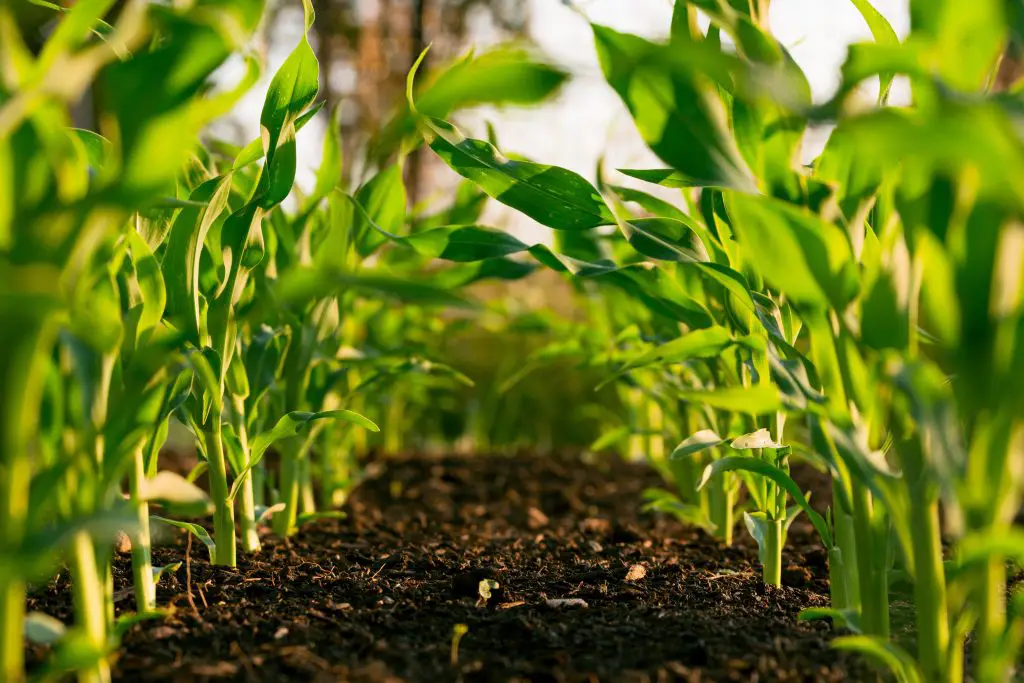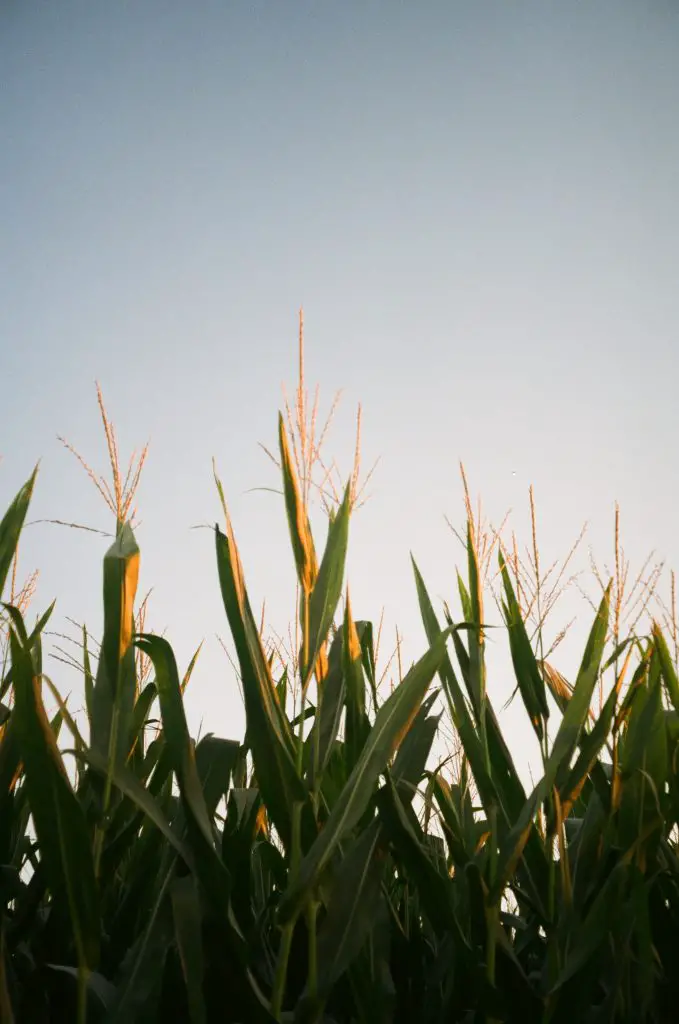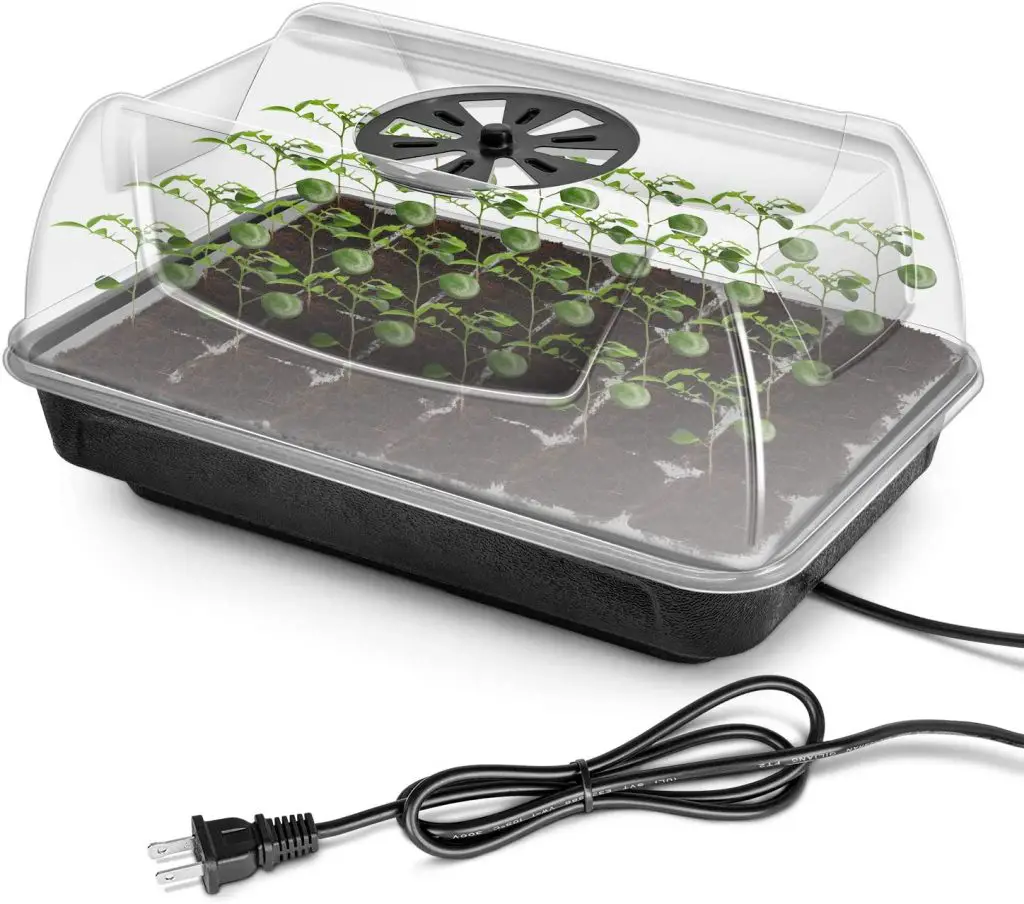How Long Does It Take For Corn Seeds To Germinate? Corn is one of the most popular vegetables to grow in the garden at home as it is easy to grow and tastes delicious when eaten immediately after being picked. However, one of the most common questions is how long does it take for corn seeds to germinate?
Corn will take approximately 7 to 14 days to germinate at temperatures of 59°F to 95°F (15 to 35°C) according to a study published by the University of California. However, the rate of germination is significantly affected when the temperature falls to 50°F (10°C) and the seeds will not germinate at temperatures below this level. A table showing the speed of germination is provided below for reference.
| Days To Germinate | Temperature (°F) | Temperature (°C) |
| – | 32 | 0 |
| 0 | 41 | 5 |
| 21.6 | 50 | 10 |
| 12.4 | 59 | 15 |
| 6.9 | 68 | 20 |
| 4.0 | 77 | 25 |
| 3.7 | 86 | 30 |
| 3.4 | 95 | 35 |
| – | 104 | 40 |
The best time to plant corn to get an early harvest is around 4 weeks prior to the last frost but at this stage of the year, it is necessary to plant the seeds in a seed tray indoors. However, because corn has a narrow window of harvest when it is at its absolute best it is a good idea to sow seeds regularly throughout the season to ensure you have a succession of crops available.
Typically, this means that you need to stagger the plantings approximately 4 to 6 weeks apart until mid to late summer. The later sowings can be direct plantings into your garden however, I generally prefer to always plant into a seed tray simply because it reduces the time that the crop spends in the garden and also accelerates the early growth.
In regions where you have relatively cold winters, it may be well worthwhile to purchase a heated propagation tray rather than just relying upon the heat within your house as that can fluctuate throughout the day and night reducing the rate of growth. If you are considering purchasing a seed tray it should I have a removable seed tray as this is the part of the unit that typically deteriorates first so being able to replace this will extend the life of the unit.
The second important feature is a humidity dome as this will help to maintain a constant environment and keep the warmth around the seeds even in the coldest regions. To see the latest price on Amazon for a product like this click on the link below.
How To Grow Corn
Corn is a relatively easy plant to grow and will germinate quickly provided that the temperatures are sufficiently warm. There are many varieties available on the market however the vast majority of them are hybrid seeds which means that you cannot collect the seeds to grow the following year.
Ideally, you should try and purchase an open pollinated variety, one of the best places to get open-pollinated or heirloom variety seeds which can be collected the following is a visit seeds now which specializes in these types of seeds. To visit the store click on the link below.
Once the variety has been selected the first step is to fill your seed tray with good quality seed raising mix and then firm the soil down into the seed tray to formed solid plugs. Having solid plugs will make it easy to transplant the seedlings later and will reduce root disturbance during this process.
One seed per cell should be planted in the seed tray at a depth of approximately half an inch. Once planted the seeds typically will appear relatively quickly, however, like all seedlings it is important to ensure that the soil remains constantly moist during the germination and seedling period. The savings will typically need to spend 6 weeks in the seed tray before they are large enough to be planted out into the garden. At this point in time they will typically be 4 to 6 inches tall.

When planting the seedlings out in the garden it is best to select a sunny location that gets at least 6 to 8 hours of sun. The seedling should be placed approximately 8 to 10 inches apart and planted in a grid or block rather than in rows. The reason for this is because corn is wind-pollinated which means that planting them in a block increases the chances of the plants being pollinated.
In terms of soil conditions corn generally prefers rich moist and free-draining soil with plenty of nutrients present. If you are unsure about the quality of your soil it is advisable to add bag compost prior to planting the seeds. Additionally, unlike many other seedlings corn is not susceptible to attack from slugs and snails generally speaking which means that you can get away without adding snail bait around the seedlings in most cases.
As corn is an upright growing crop it is also possible to grow a range of other vegetables in the same space as the corn is being grown. The most suitable types of vegetables or fruit to be grown in the same place is plants with trailing Vines such as pumpkins, watermelons, cantaloupes, and cucumbers. These plants often benefit the corn as they reduce the loss of moisture from the soil by acting as ground covers.
Most common varieties will reach a height of approximately 4 to 6 ft however there are some varieties that are much taller than this. Irrespective of the variety each corn stalk will produce only 2 is per stalk.
The ears of the corn will produce spindly white hairs from the top as the plant approaches the point at which it is ready to harvest. However, you should not consider checking that the corn is ripe until these spindly hairs have turned brown and died back.
At this point, it is worth checking whether the corn is ripe. To do this peel back the leaves to reveal the corn cob and then use your thumb to pierce one of the kernels. If white juice appears from the corn then the corn is ready to be picked. If it is clear leave it for longer. To avoid damaging too many ears recover the ear that you’ve just tested and come back in a week or two and check it again.

It is also important to note that corn has a relatively short window where it is ripe so you need to pick the corn when it is ready to go otherwise it will start to deteriorate. However, those corns I have gone too far can also be collected for seed for the following you provided that you have purchased an open-pollinated variety which is usually any variety that does not have the term F1 or hybrid in its name.
The corn cobs picked for seed can just be put aside and allowed to dry out and once completely dry you can snap off the kernels which can be used to see the following year.
I hope you found this article useful and have great success growing corn at home, if you have any additional comments or questions please leave them in the section below.
Relevant Articles
Can You Save Corn Seeds For Next Year?
Is It Too Late To Plant Sweet Corn?
Is Corn Annual Or Perennial? Do I Need To Plant It Every Year?
Can You Harvest Corn More Than Once In A Season?
When Do You Pick Corn? What happens If You Pick Corn Too Early?



